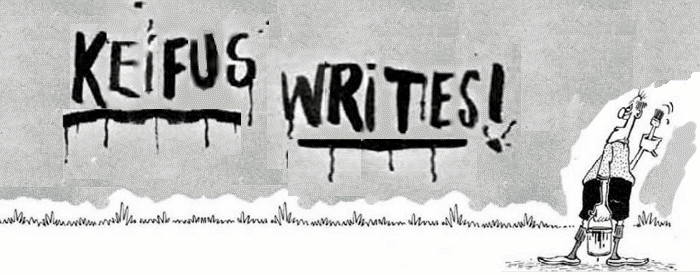Review: Cannery Row, by John Steinbeck
Cannery Row was picked up on a recommendation from a year or two ago (See? I do follow through on those things once in a while), a comment on an old post of a fictional bash attended by us online types. An elaborate Goodbye Cruel World sort of thing, and, well, many of us have been there. The novel, I was told, was similar in spirit. It had a party, for one thing, and caught a similar theme. It was a good observation.
The story takes place in Monterey, CA in the early 1940s, during the peak of the fishing industry there, based, at least loosely, on real characters inhabiting an actual nook of its skid row. The novel focuses on the off hours, in dawn and in twilight, where transience is a palpable sensation, but which also reflects in the light a burnished, etched-in-stone quality, like a frozen memory, or a sepia-toned photograph, or, to dig into Steinbeck's preferred metaphor, as the earnest scurrying of the diverse marine animals that flourish for a few hours in tide pools between the ocean's inevitable scouring. I don't know if Steinbeck realized the sardine industry was as ephemeral as its population (possibly he did--he wrote this after a stint as an amateur marine biologist), but that fits in well enough. The industry that holds all these people in place isn't much confronted, nor is the war, but you can almost infer the brutal patterns of society from these large omissions. These inscrutable but measurable forces may have selected the population of this private ecosystem, but the novel concerns itself with what they do when confined to the same pool.
The storytelling is one of those wandering mosaics, a series of interconnected vignettes that focus on one or two characters at a time, letting them cross, and interact a moment before diverging off into another sequence, with another's point of view. I don't know if this is the best version of this technique I've come across--U.S.A., for a recent example, might come out ahead in overall points scored--but Steinbeck tours us through the lives of some colorful men and women, and finds in there some universal life truths, humor, misery, joy and passion, in an admirable economy of words. There's depth in there, or at least angles of light that imply depth. (I found the handful of authorial segues and introductions to be lovely enough to rob them of their running comparisons.) If, for example, his painter Henri lacks the genius to grasp the philosophical implications in art that he imagines he's after, then his existence itself comes together as a fine tableau to describe a certain balance between connection and the individual burden of holding against a hostile world and the inevitable unknown.
That sounds like the Steinbeck I remember, except rather than doubling as a painful object lesson, Henri is treated with a tender humor. I feel I must have read a dozen of his novels when I was young (it was closer to three). He gets assigned to students because the writing isn't difficult and the themes are impossible to miss, but Cannery Row, while taking the familiar ideas, feels like a different creature altogether. The humor is part of it, and there is gentle affection all around, but Steinbeck also makes a point to hold back on the judgment and observe the community. The soul-crushing hopelessness that was the finale of those other novels is only a prelude here, and the difference is huge. The life which follows, tough but dear, is allowed to be savored. Melancholy and joyfulness...where did I read that?
Another thing I liked about the novel was the diversity of its residents, ranging from Mack and the boys, the bums who have, after their fashion, mastered a life of complicated idleness, to Doc, the biologist shacked up in the lab supply business across the street. The rest of the characters radiate in connections to Mack and Doc, and occupy various social strata in between them. What's brilliant about the Cannery Row community is the lack of pretension that Steinbeck places between its members. They all live in their roles in the community hierarchy, but the author locates the common experience they share. Mack spars with the Chinese shopkeeper, and Doc reluctantly takes on his mantle as local wise man, but on the other hand, Lee Chong goes to Mack's parties, and gives in to his schemes even though he knows better, and Doc treats his neighbors with dignity and patience. Each individual is an indispensable cog in the community, and they have everything in common and yet they all have those unreachable places that shelter their own failures. Lonely in a crowd, geniuses and lunatics clinging together, less different than we want to admit, and yeah, point taken.

2 comments:
You have to admit that The Winter Of Our Discontent is a total rolling-all-over-the-floor!
LOL!!!
[sigh]
I hate people. Great post. Again.
Yeah, I missed that one, but rest assured, I feel like I read it.
But here the balance was much different. I meant to add the "joy and melancholy" line to the other version too (caught it on the re-post).
Post a Comment